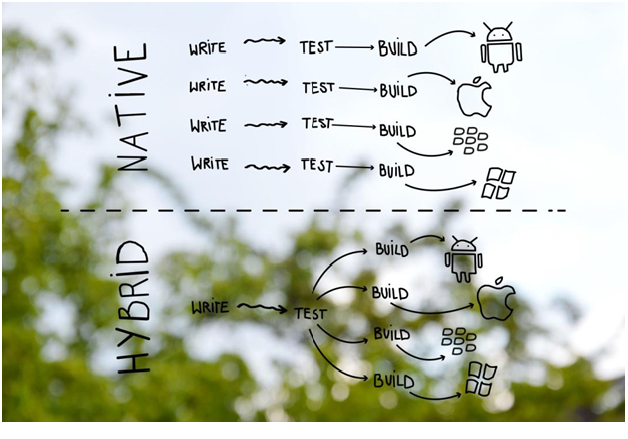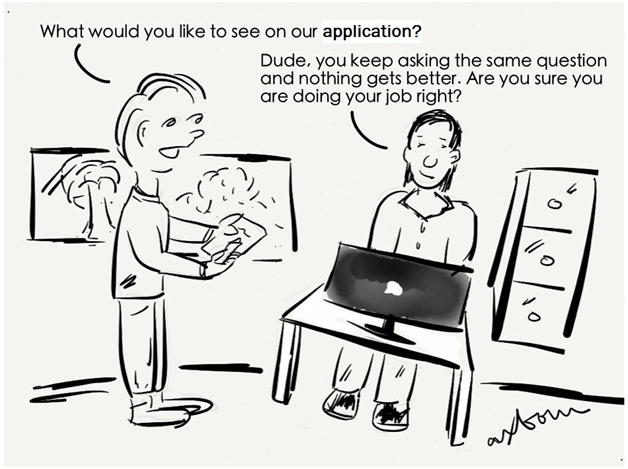Mobile applications are proving to be revolutionary for modern businesses. They can be the competitive advantage for one organization. Having an app for your enterprise is inevitable in today’s digital age, but more importantly, you have to follow a set path to create a successful application that meets all your requirements. Take a look at these 15 tips before you offer your money to a mobile app development company.
1. Understand Your Needs First
The first thing you have to do is know your requirements. A few questions you want to ask yourself before you start looking for a mobile app development company are as follows:
- Why do I need an enterprise application?
- How will my company benefit from it?
- Will the use of an app have any long-term impact on my company’s performance?
- What are the pain points that I want to address with an app?
Know the answers to these questions so you can explain your exact requirements to the developers.
2. Pick the Type of App That’s Best for You
You have native, web and hybrid apps to choose from. If you need an app with basic functions that’s also light on your resources, a web app is the best option. Native applications can be costly but their performance is their strength. Additionally, native apps can run offline whereas web apps are only as good as your internet connection. The last option you have is a hybrid app that combines the strengths of web and native apps.

3. Focus More on Functionality
The common trend is to rate good-looking applications higher than the ugly ones. However, that’s not the case with enterprise mobile applications. While the looks are somewhat important, they should not be the aim. The main focus should be a user-friendly UI and smooth functionality.
4. Let Needs of the Users Define the Design
As stated above, an enterprise mobile application should focus more on function than form. However, an intuitive design plays a major role in simplifying functionality for the users. Once you know the reasons for creating your application and how your target audience will be using it, you will have a basic design of the app in mind.

5. Take Input from the Employees
Your sales, marketing, customer support, etc. teams are going to use the application, and they all have different needs. Their pain points differ and so do their expectations from the application. Before you submit the project to a mobile app development company, talk to employees in various departments to know what processes they want simplified and which ones they believe should remain unchanged.
6. Go for Multiple OS Support
If you are an enterprise with hundreds of employees, you have to understand that they are using different devices as well. Things get even more complicated when your employees are spread across multiple countries. Your enterprise application should not be exclusive to a particular mobile operating system.
7. Consider the Cluster
You don’t necessarily have to create one single app to manage the many different verticals of your enterprise. Clustering is an option wherein you create a different application for each department, and control all functionalities from one app. Such an approach puts an end to your employees’ tech needs which can otherwise arise when there are hundreds of options on their application that they cannot and should not use.

8. Pay Extraordinary Attention to Security
You are creating an application that is going to act like a portal into customer information. You have to be sure that only authorized people can access sensitive information. Be up-to-date with the latest customer data protection rights and standards. Look for ways to make your application safe. Introduce the permission feature so you can allow or restrict certain people from accessing certain information.
9. Enable AI
AI (artificial intelligence) is the new trend. The focus on artificial intelligence from the biggest tech giants of the world has compelled enterprises to use this technology in their applications. The use of artificial intelligence in enterprise apps can help employees get rid of redundant tasks, be more productive and provide better service.
10.Leave the Animations Out
When an app is in development, you might feel the temptation to make it look modernistic. You use applications on a daily basis and their animations must impress you. However, that’s not something you want to aim for in an enterprise app because such bells and whistles affect the productivity of the app.
11.Take Advantage of Sensors on the Devices
Mobile applications are amazing in how they take advantage of in-built features and sensors of the devices. Any mobile device today e.g. tablets and smartphones has numerous sensors like Bluetooth, accelerometer, GPS, camera, etc. Let your application make the most of these sensors to give users a smooth experience.

12.Make It Customizable
Only a few people are going to use an enterprise application since you are not creating it for the public. Such small population of users allows you to make the various facets of the application customizable. Let users customize the various components of the app-face to let them be more productive.
13.Learn from Your Competitors
You don’t want to imitate your competitors but you surely want to learn from them. If they have an application and it is working for them, take a look at what they are doing right. You can even learn from user applications that you find on app stores.
14.Consider Mobile App Development Platforms
If you have in-house professionals to develop your application, you can take advantage of a mobile app development platform. Mobile app development platforms let you create applications with simple drag and drop features, and with the help of forms and templates. However, it is best that you let professionals do the development because they can make the most of the limited features that are available on these platforms.
15.Develop Iteratively
The best way to develop an app is to develop it iteratively wherein you obtain feedback from the users as you progress. Developing an application in its full form and then giving it to users can be a disaster. You will have a huge list of issues, some of which might even make certain components of your application completely useless. Let these errors appear during the development process so you can take care of them through small updates after the completion of the application.


In the end, it is imperative not to develop an application just for the sake of it. Just because you have a budget to develop an application does not mean you have to. Identify your needs and be sure that your application solves a problem, and increases productivity.

